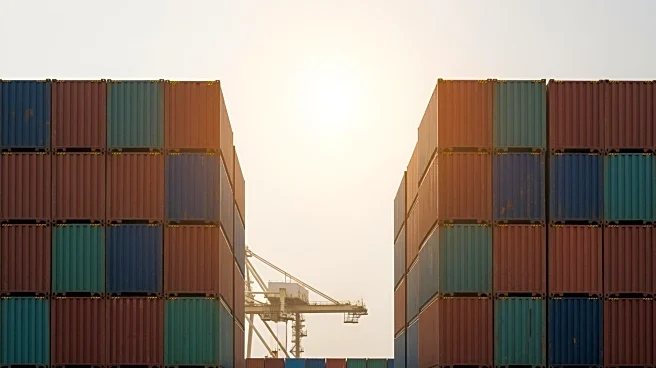What's Happening?
President Trump's tariffs on Italian goods are poised to affect the availability of Italian pasta in U.S. grocery stores. The tariffs, aimed at Italy's largest pasta exporters, could lead to increased
prices and reduced supply for American consumers. This development is part of a broader trade policy that has seen tariffs imposed on various European goods, impacting international trade relations and consumer markets. The tariffs are intended to protect domestic industries but may result in higher costs for imported goods, including popular Italian pasta brands.
Why It's Important?
The imposition of tariffs on Italian pasta could have significant implications for U.S. consumers and retailers. As pasta is a staple in many American households, any disruption in supply or increase in prices could affect consumer spending and grocery store sales. Additionally, the tariffs may strain trade relations between the U.S. and Italy, potentially leading to retaliatory measures that could impact other sectors. Businesses that rely on imported goods may face challenges in maintaining competitive pricing, which could influence market dynamics and consumer choices.
What's Next?
If the tariffs remain in place, U.S. retailers may need to seek alternative suppliers or adjust pricing strategies to accommodate the increased costs. Consumers might experience a shift in purchasing habits, opting for domestic pasta brands or other alternatives. The situation could prompt discussions among policymakers and trade representatives to negotiate terms that mitigate the impact on both economies. Monitoring the response from Italian exporters and U.S. retailers will be crucial in understanding the long-term effects of these tariffs.
Beyond the Headlines
The tariffs on Italian pasta highlight broader issues in international trade policy, including the balance between protecting domestic industries and maintaining healthy trade relationships. This situation underscores the complexities of global supply chains and the interconnectedness of economies. It also raises questions about the effectiveness of tariffs as a tool for economic protection and their unintended consequences on consumers and businesses.











